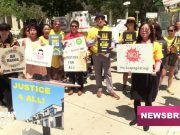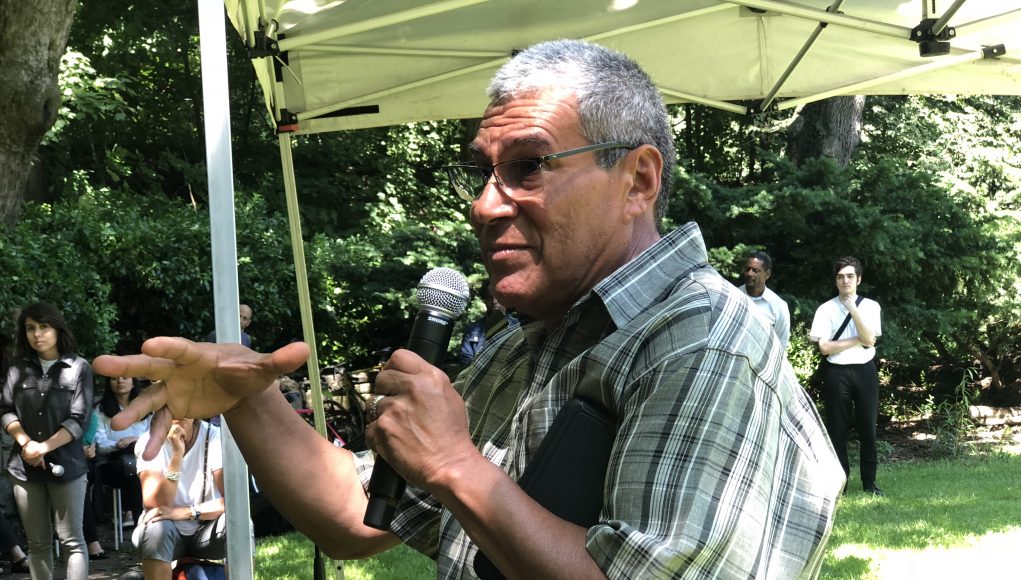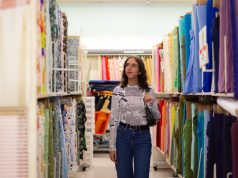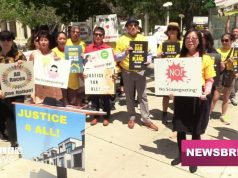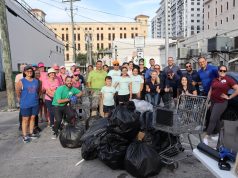It was a big day for Roberto Garay. It was his first time teaching public policy since he arrived in the U.S. five years ago.
His new classroom: a grassy field surrounded by trees in Brooklyn’s Prospect Park.
“I am testing myself,” said Garay, a native of El Salvador. “I am testing my English and my confidence to prove to myself I can teach in English.”
Garay teaches at University Open Air, a three-week, pop-up university with an all-immigrant faculty. Teachers lecture on topics connected to the careers they had in their native countries, topics such as immigration policy, the history of Islam and Taiwanese poetry.
Classes are free, but teachers are paid $120 per class.
The Brooklyn Public Library spent $5,000 to sponsor the program, partnering with the Prospect Park Alliance to host the weekly lectures in the park.
Lázló Jakab Orsós, library’s the arts and culture vice president, created University Open Air to showcase overlooked immigrant skills and knowledge.
“I thought we should really tap into the amazing immigrant resources here and all this hidden layer of knowledge and wisdom,” he said.
Garay taught international politics for more than 25 years in Central America, South America and China.
Now, he sets up Bluetooth and wireless connections on cell phones and tablets at Southern Telecom, an electronics manufacturing company in Sayreville, New Jersey.
“I never imagined I would work on that, it’s a surviving job,” said Garay. “That is my job, and I do it, but I don’t like it.”
Garay, now 58, sees teaching at the pop-up university as a step toward practicing his former profession in this country.
He gave up his academic career to reunite with his mother, who has Alzheimer’s. She has lived with his sister in the U.S. for more than 40 years.
During Garay’s eight years teaching at Tamkang University in Taiwan, he talked regularly with his sister about their mother’s decline. Worried that his mother wouldn’t recognize him, he came to visit and decided to stay.
“Professionally it was very unpleasant,” he said, “because it’s not easy to let go of your work life and come to another country where you don’t know how you will adapt to society or how you will find a job.”
“I don’t consider it a sacrifice because family is here,” he said, switching to Spanish. “My family life here has made up for the loss of my professional life, because I have the opportunity to be with my mother while she’s alive.”
Garay’s first class was on U.S. policy toward immigrant caravans. More than 30 students sat in the shade to listen.
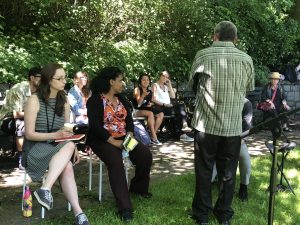
The students dressed casually, but Garay came, briefcase in hand, wearing dress shoes and pants, and a short-sleeved, button-up shirt.
Garay wanted to debunk myths on the immigrant caravans.
“The caravans are old; this is not a new phenomenon,” he said. “Before, the caravans were of only 80 people or 100 people at most, but now it’s 1,500 people.”
Garay said about two-thirds of the people in today’s caravans are families; in the past they were mostly single men coming to work or fleeing Central America.
“Now the situation changed and we have women, children and unaccompanied children,” he said.
Immigrants’ motivations to come illegally to the U.S. vary by country but haven’t changed, he said. In El Salvador, gangs are the main reason residents flee.
“In El Salvador, about 75,000 people died in the civil war, but now we have more than 100,000 deaths from the gangs,” Garay said.
He said Mexicans have always come because they can’t find jobs at home, while migrants from Honduras flee street violence, poor health care and poverty.
“In Honduras, we also have crime and weak institutions, a low level of confidence in governmental institutions by the people and chronic poverty,” he said.
Garay said the executive orders enacted by the Trump administration in 2017 made it more difficult to claim asylum or any other status, and separated families, but the root of the problem is in Central America.
“The problems are in these countries the people fled,” he said.
Students continually raised their hands to ask questions through the lecture, butGaray’s favorite question was one he couldn’t answer.
Salvadoran native Mirtala Sanchez asked how the caravans could be stopped.
“I don’t know,” said Garay. “All that I can say is that if these countries create jobs, improve the health system and protection so people feel safe is how people are going to stop coming here.”
Sanchez, 29, who has a bachelor’s degree in education from New York University, said classes like this raise awareness.
“I feel like a lot of people don’t know what is happening,” Sanchez said in Spanish. “They see headlines and say, ‘Oh, poor kids and poor people’ but then they forget.”
Among the students attending the class were New Yorkers, Ohio residents and immigrants from Central and South America.
Nancy Kangas, who moved to New York from Ohio earlier this month, illustrates childrens books and came to the class because she wants her next book to focus on immigrant children.
“I learned about the complexity of the issue,” said Kangas. “I didn’t understand there’s a difference between the reasons of Mexicans coming here versus a Salvadoran coming here.”
She appreciated learning about immigration from a Central American native.
“I think his perspective is really important,” said Kangas, whose mother is Irish. “We are all immigrants, but he’s closer to it.”
When the lecture was over Garay wanted to speak in Spanish.
“I don’t feel that teaching class is very difficult, what I feel most difficult is to express myself because in my head the languages mix,” he said.
Orsós thinks having an immigrant faculty sends a political message.
“You think that the immigrants are just these objects, these numbers, but, no, there are huge stories and there is knowledge behind each and every character,” he said
For Garay, teaching at University Open Air means getting closer to the goal he has been working toward since his arrival.
“I want to work for the government, that is my dream,” said Garay. “I would like to give class in a government university like the U.S. Marine Corps University.”
Valentina Palm is a reporter in the Caplin News’s New York City Bureau.




